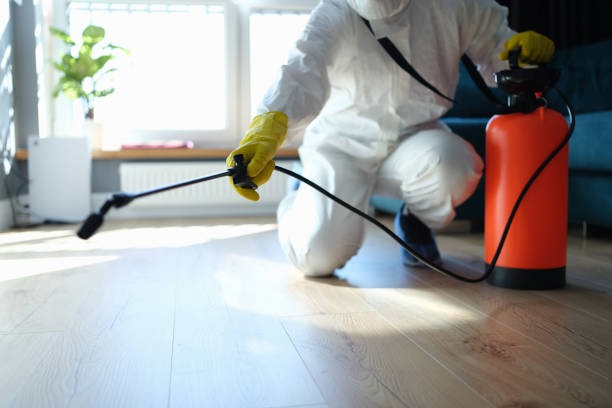Dealing with biohazards is a serious matter that requires expertise and careful handling. Whether it’s a crime scene, a hazardous spill, or an infectious outbreak, biohazard cleanup demands specialized knowledge and equipment. In this article, we’ll examine the practices for ensuring safety during biohazard cleanup and restoration. If you’re curious about how professionals manage these intricate tasks, read on!
Importance of Professional Expertise
First, let’s discuss why hiring professionals for biohazard cleanup is crucial. Handling hazardous materials isn’t just about cleaning up a mess. It involves understanding the nature of the biohazard and applying scientific principles to ensure safety. Professional teams, like an Oakville, ON property restoration company, are trained to deal with various biological threats and utilize the right techniques to prevent contamination and illness.
Training and Certification
-
Professionals undergo extensive training in hazardous material handling.
-
Certification ensures adherence to safety standards and legal requirements.
-
Continuous education keeps professionals updated on the latest methods and safety protocols.
Essential Equipment and Tools
Proper equipment is vital for biohazard cleanup. Using the right tools not only guarantees the thorough removal of hazardous materials but also protects the cleanup crew and anyone who may enter the area afterward.
Types of Equipment Used
-
Protective Clothing: Includes gloves, masks, gowns, and respirators.
-
Disinfectants: Specialized solutions for sterilizing the affected environment.
-
Containment Tools: Barriers and absorbents to control and isolate hazards.
-
Heavy-Duty Cleaning Devices: Industrial vacuums and scrubbers tailored for biohazard removal.
Safety Protocols in Biohazard Cleanup
Safety is non-negotiable in biohazard situations. Following strict protocols helps minimize risks and ensures that the cleanup is effective and thorough.
Common Safety Measures
-
Hazard Assessment: Identifying potential risks before beginning cleanup.
-
Controlled Access: Limiting entry to the affected area to essential personnel only.
-
Decontamination Procedures: Implementing methods for thorough sanitation of personnel and equipment.
-
Waste Disposal: Properly labeling, handling, and disposing of biohazardous waste.
The Cleanup Process Explained
Ever wonder what a typical biohazard cleanup looks like? While it varies depending on the specific situation, there are some common steps professionals follow to ensure comprehensive cleaning and safety.
1. Initial Assessment and Planning
It all starts with a thorough assessment of the scene. Identifying the type of biohazard and the extent of contamination is vital. This assessment enables experts to develop a cleanup plan tailored to the site’s specific needs.
2. Containment and Control
Containment is a priority to prevent the spread of hazardous materials. Professionals often set up physical barriers and use specialized tools to isolate the area. This step ensures that the threat doesn’t extend beyond its original location.
3. Removal and Disposal
Next, experts focus on the removal of contaminants. This involves cleaning surfaces, removing affected materials, and disposing of them in legally compliant ways. Waste is carefully packaged and transported to waste management facilities for safe disposal.
4. Site Restoration
After removal, the area undergoes thorough decontamination and sanitation. This may include deep cleaning and the use of odor-removal techniques. The goal is to restore the site to a safe, habitable state.
Choosing the Right Services
Finding reliable biohazard cleanup services in Oakville, ON, can be a challenge. It’s crucial to choose a team that demonstrates expertise, reliability, and trustworthiness. Take time to research and opt for services that follow all regulatory requirements.
1. Evaluating Service Providers
When searching for a cleanup team, consider these factors: experience, reputation, and compliance with local and federal regulations. Understanding the scope of their services can help ensure you choose a provider that meets your specific needs.
2. Comparing Costs
Cost is often a consideration when weighing your options. Get multiple quotes, but remember that the cheapest option may not always be the best. Look for a balance of cost and quality to ensure effective cleanup and peace of mind.
Preventing Future Hazards
Prevention is always better than cure, right? Taking steps to prevent future biohazards can save time, money, and stress. Implementing preventative measures can significantly reduce the risk of encountering such situations again.
Maintaining Cleanliness
Regular maintenance and cleanliness can prevent many potential hazards. Proper sanitation methods and routine cleaning can keep spaces safe and minimize the chance of biohazard incidents, especially when considering services like water damage restoration in Oakville, ON.
Awareness and Training
Educating employees or residents about the risks and safety protocols is an essential preventive measure. Awareness can lead to early detection and resolution of potential biohazards before they become significant problems.
Investing in Professional Consultations
Consider having professionals conduct regular inspections of your property. These consultations can identify vulnerabilities and recommend improvements, greatly reducing the likelihood of future hazards.
Final Thoughts
Biohazard cleanup is about more than just dealing with a mess; it’s a complex task requiring specialized care. Prioritizing safety, understanding the process, and choosing the right professionals are all critical steps in ensuring successful cleanup and restoration. With these insights, you’re better equipped to handle or choose services for biohazard situations. Remember always to put safety first!
